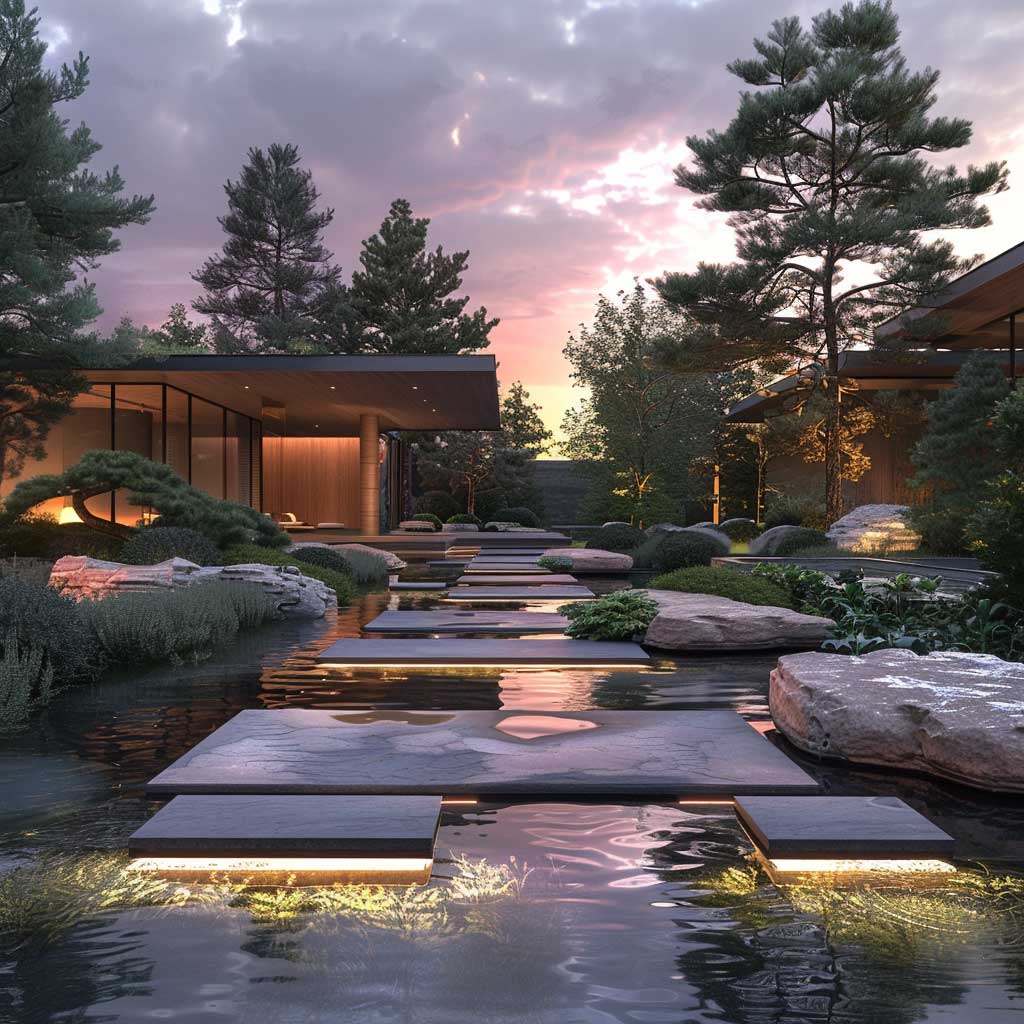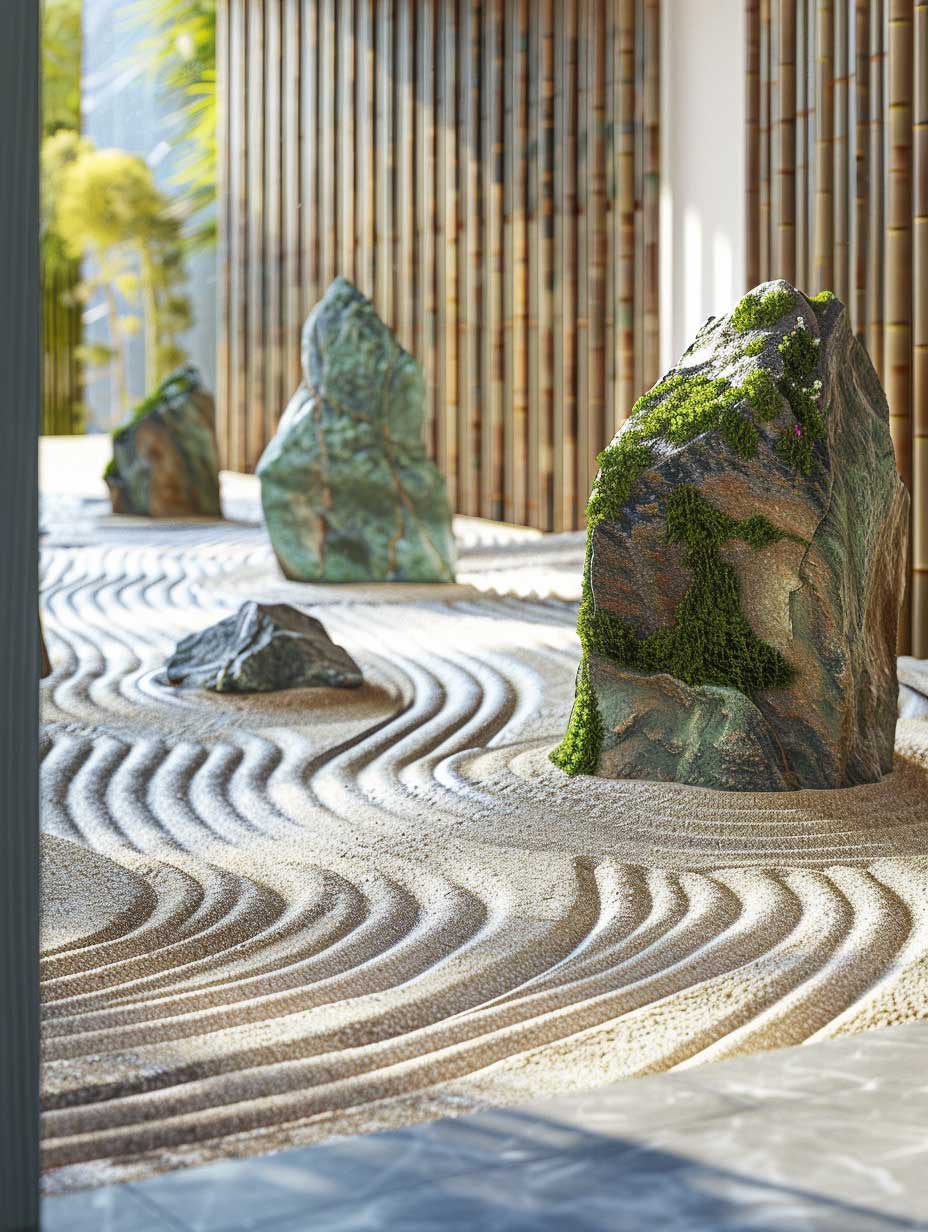In the realm of modern landscape design, the interplay of contrast, color, and texture opens up a myriad of possibilities to transform outdoor spaces into captivating environments. This approach not only elevates the aesthetic appeal of gardens and yards but also enhances the sensory experience of those who wander through them. By skillfully juxtaposing different elements, designers can create landscapes that are not only visually striking but also deeply resonant with the natural world.
Sculptural Plants in Minimalist Modern Landscape Design
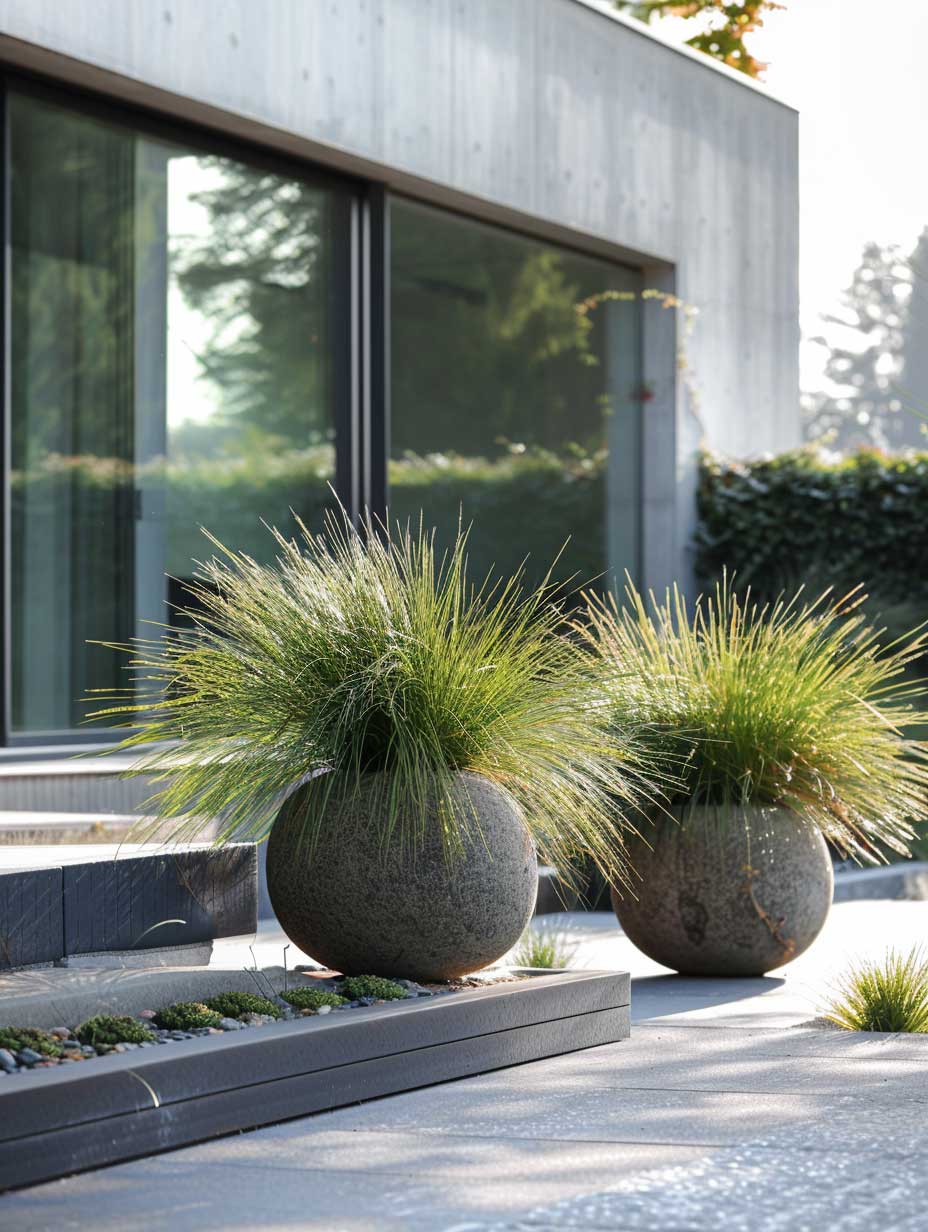
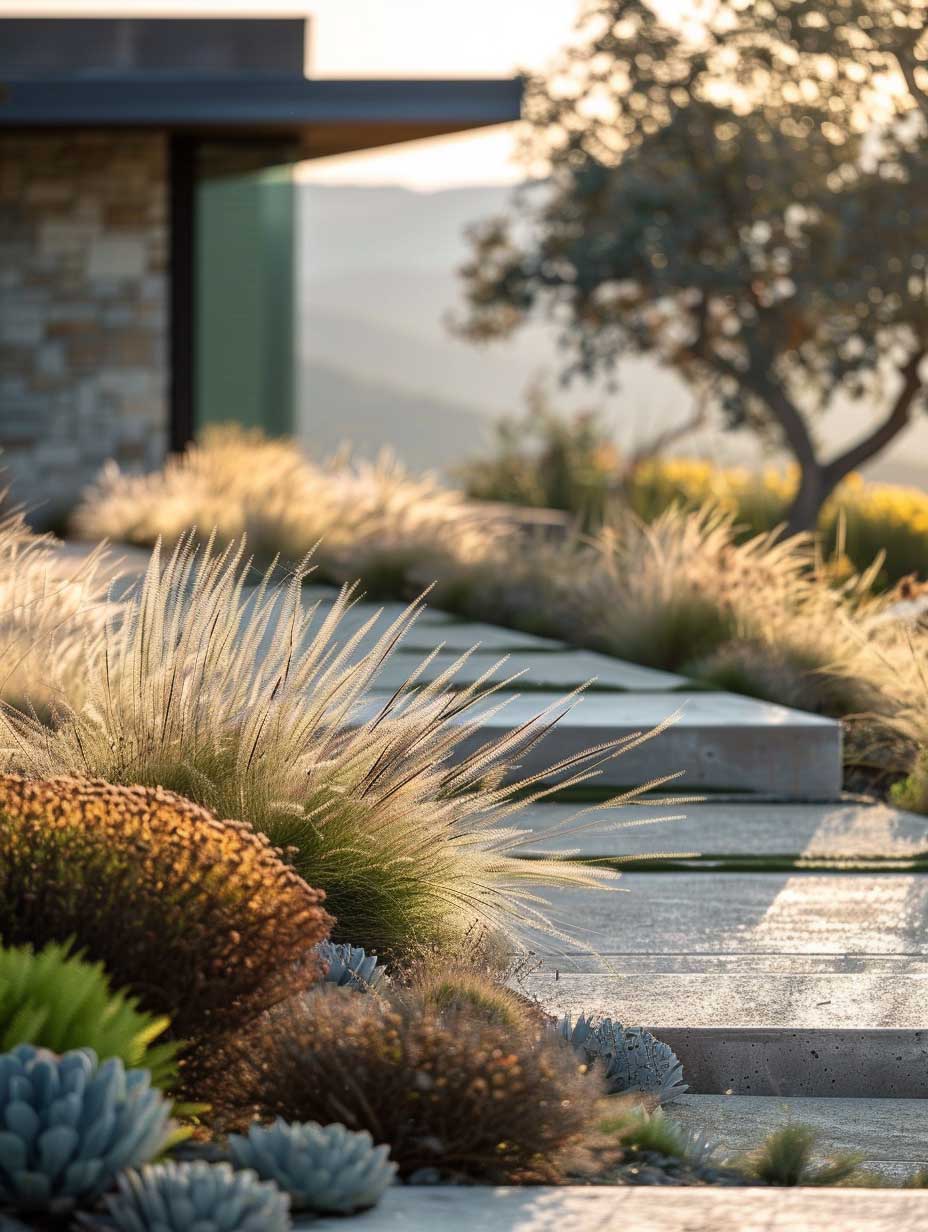


Delving into the realm of minimalist modern landscape design, the incorporation of sculptural plants presents an opportunity to explore the balance between simplicity and complexity. This design philosophy leverages the unique forms and textures of plants to create a serene yet engaging outdoor space. The essence of this approach lies in its ability to highlight the natural beauty and architectural qualities of each plant, transforming the garden into a living sculpture gallery.
In a minimalist setting, every element is chosen with intention and purpose. Sculptural plants are selected not only for their aesthetic appeal but also for their ability to create focal points within the landscape. Tall grasses sway gracefully in the breeze, their slender forms adding movement and depth. Angular succulents offer geometric contrast with their precise shapes, while rounded bushes soften the edges and bring a sense of fullness to the design. These plants are positioned against a backdrop of clean lines and uncluttered spaces, emphasizing the minimalist ethos of “less is more.”
The beauty of incorporating sculptural plants into modern landscape design lies in the dialogue between the plants and their surroundings. The simplicity of the hardscaping—be it smooth stone pathways, sleek water features, or understated garden furniture—serves as a canvas for the dynamic forms and textures of the sculptural plants. This interaction creates a harmonious blend of natural and man-made elements, inviting contemplation and providing a tranquil retreat from the hustle and bustle of daily life.
Moreover, the choice of sculptural plants in a minimalist landscape is deeply connected to the principles of sustainability and ecological sensitivity. Many of these plants are drought-resistant and require minimal maintenance, making them an ideal choice for environmentally conscious designs. By selecting species that thrive in the local climate, designers can create landscapes that are not only visually stunning but also resilient and sustainable.


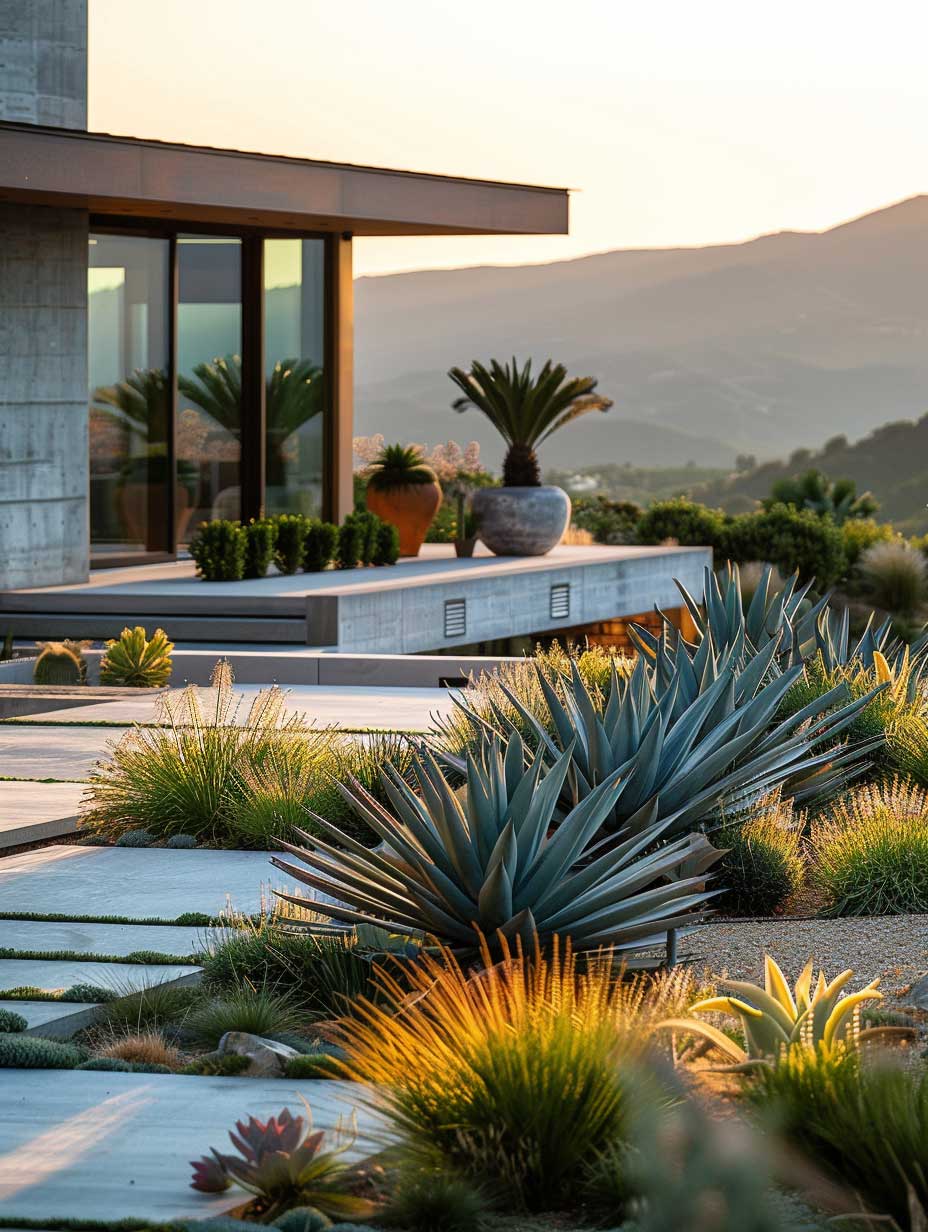
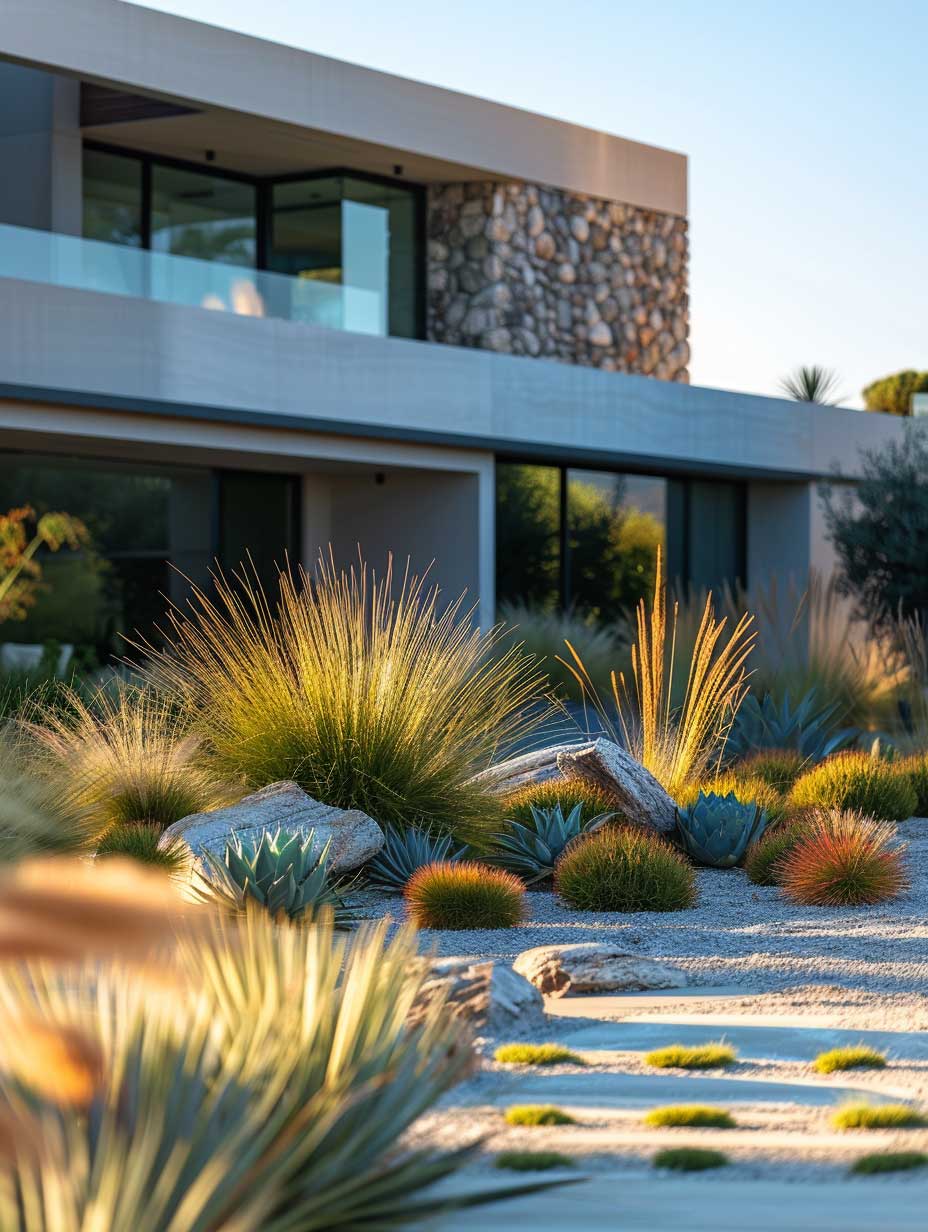
The strategic use of sculptural plants also enhances the sensory experience of the garden. The varied textures—from the smooth, waxy leaves of succulents to the feathery fronds of ornamental grasses—invite touch, while the interplay of light and shadow on their forms changes throughout the day, adding a dynamic visual element. This sensory engagement encourages visitors to slow down and connect with the environment on a deeper level.
Creating a minimalist modern landscape with sculptural plants requires a thoughtful approach to composition and spacing. The negative space around each plant is as important as the plant itself, allowing each form to stand out and be appreciated fully. This careful orchestration of space and form results in a landscape that is both aesthetically pleasing and profoundly peaceful.
In embracing sculptural plants within minimalist modern landscape design, we are reminded of the power of nature to inspire and ground us. This approach goes beyond mere decoration to create spaces that reflect the beauty of simplicity, the elegance of form, and the timeless appeal of nature. As these gardens evolve over time, they continue to offer new perspectives and moments of beauty, underscoring the enduring impact of well-considered landscape design.
Through the thoughtful integration of sculptural plants, minimalist modern landscapes become not just areas of visual interest, but spaces of emotional and spiritual enrichment. They stand as a testament to the designer’s artistry and the garden’s ability to connect us to the natural world in meaningful ways.
Modern Landscape Design with Bold Color Blocks
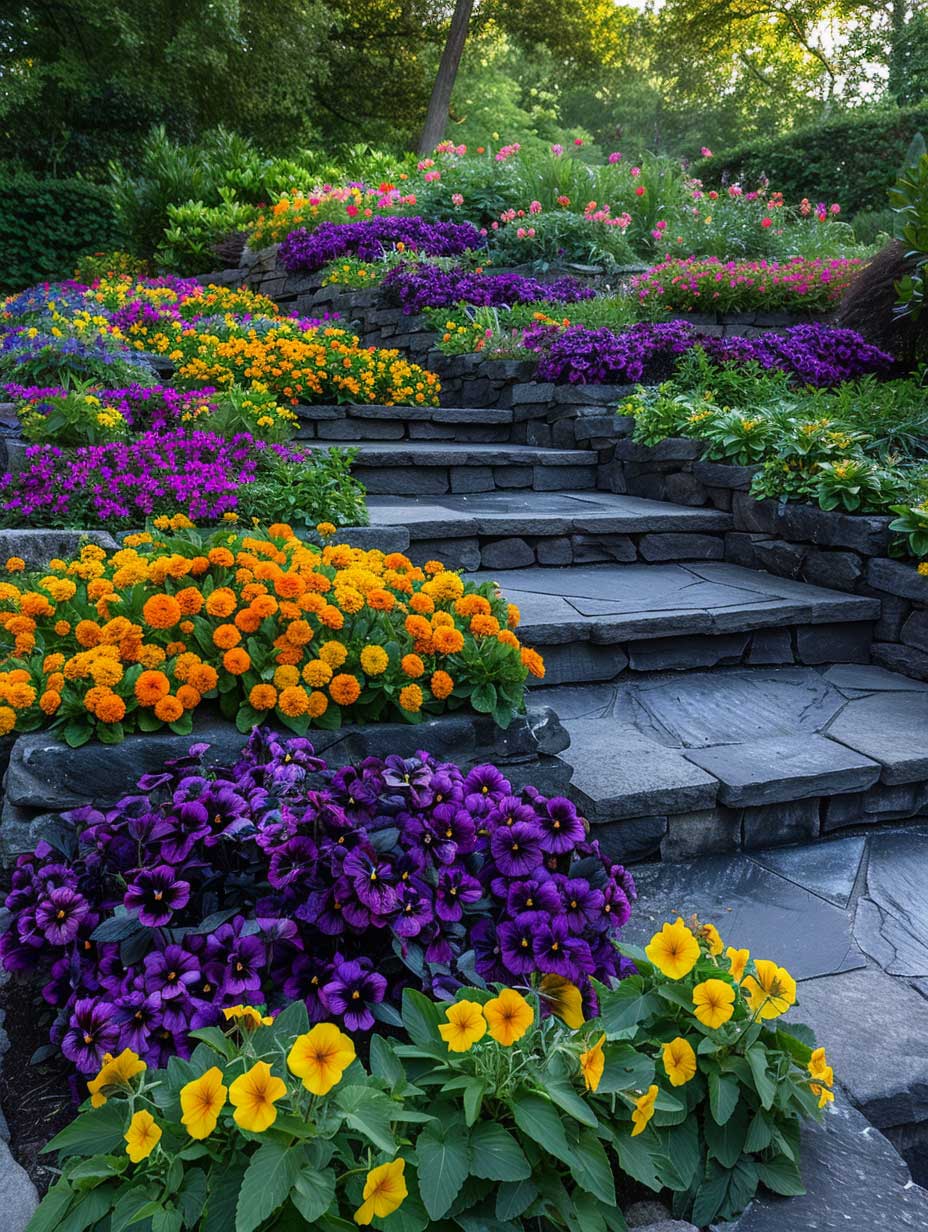
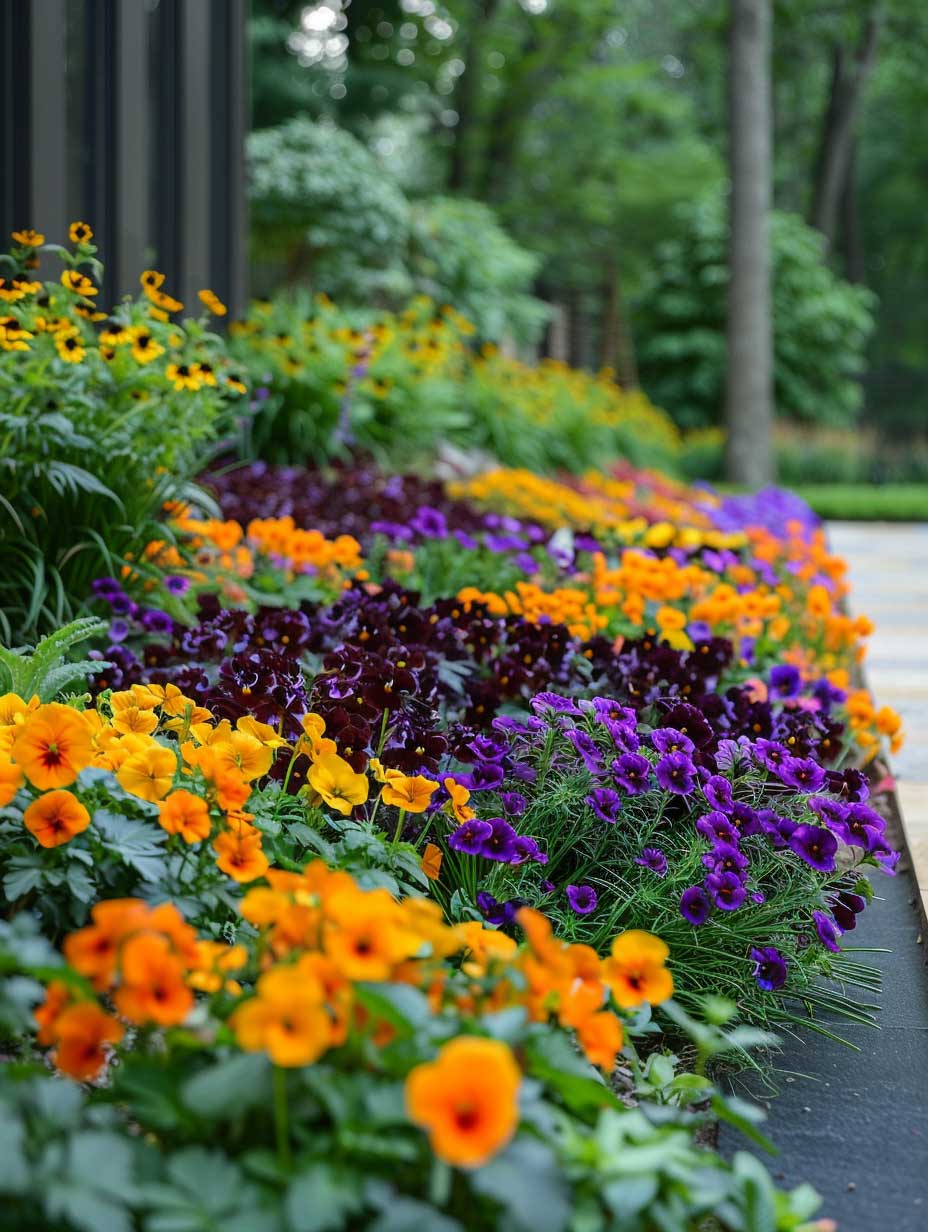
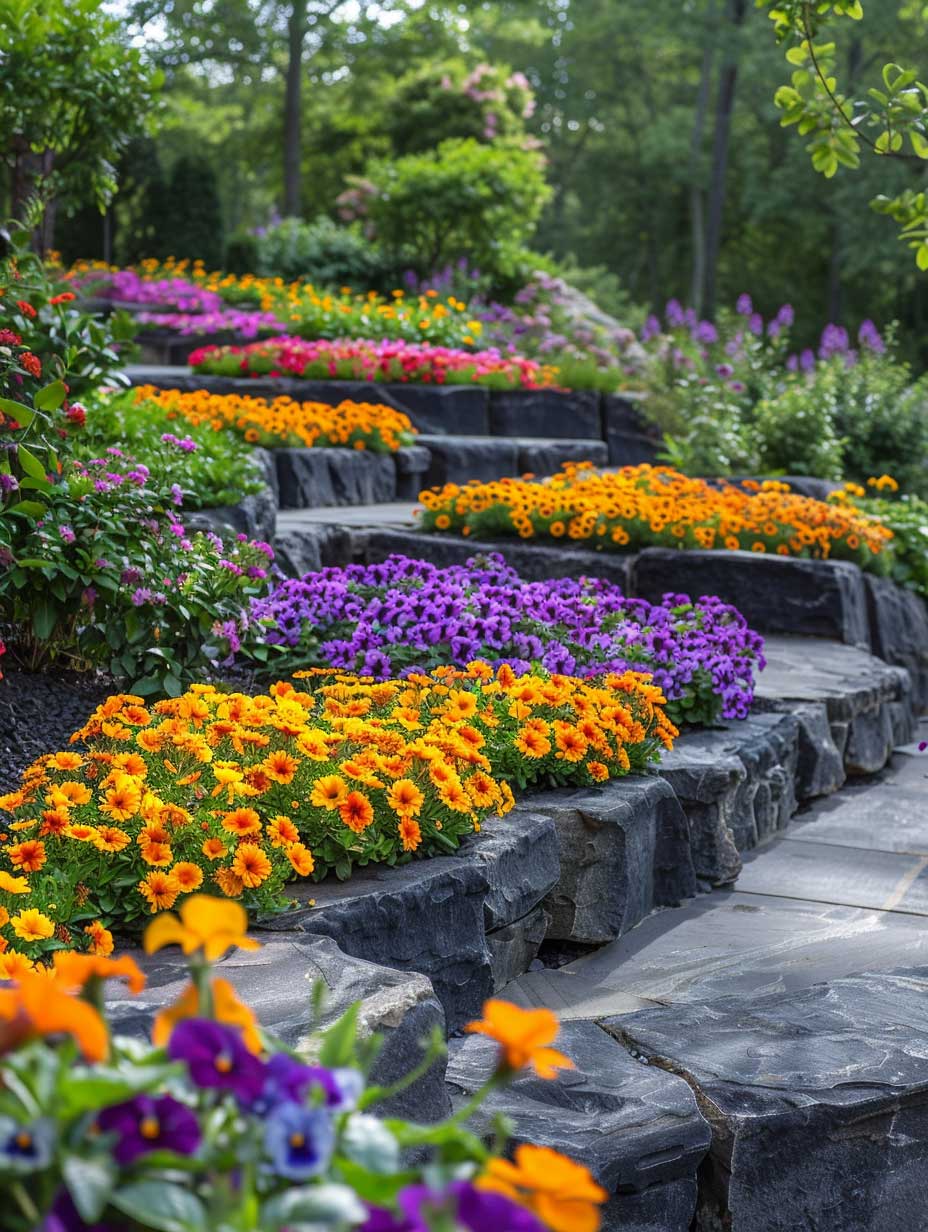
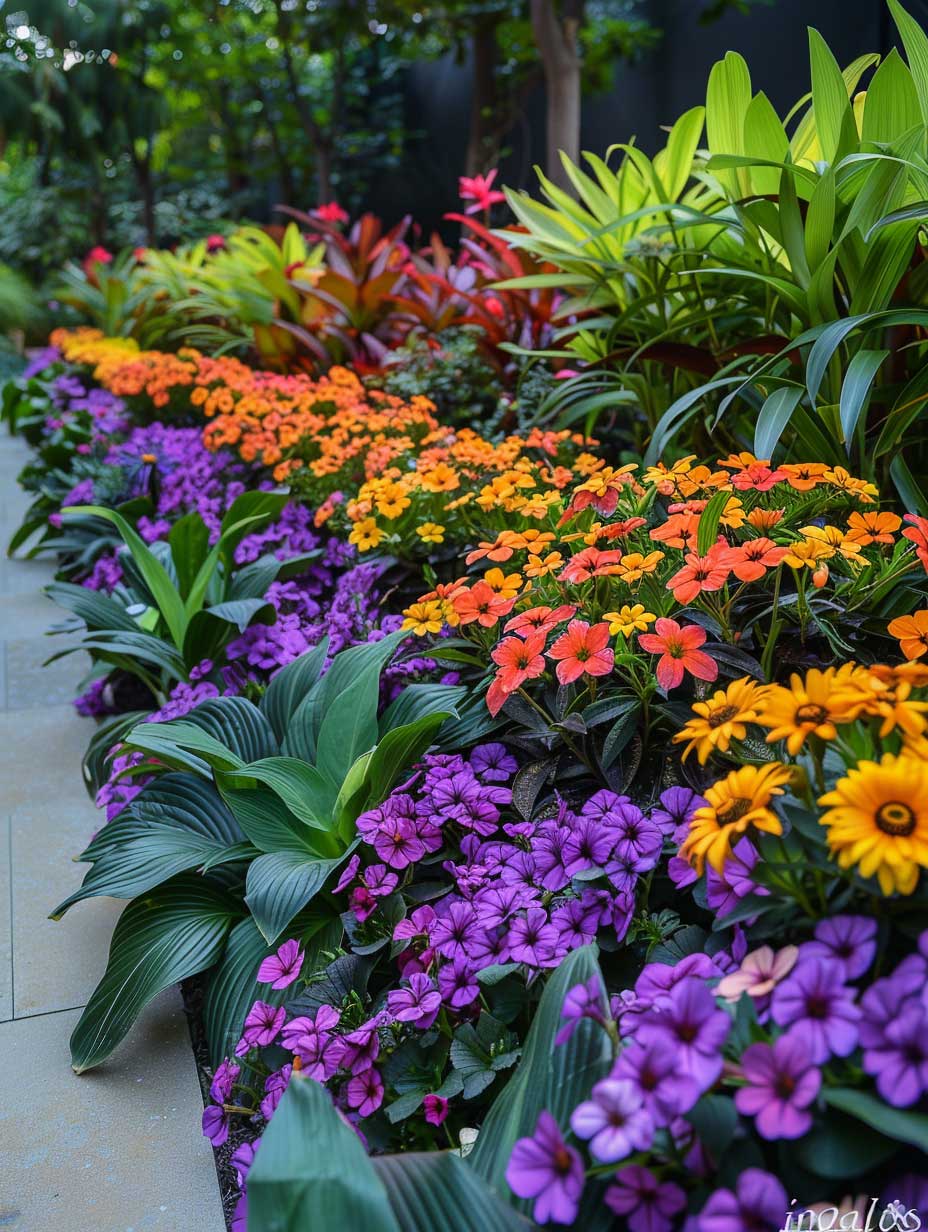
In the dynamic world of modern landscape design, the deliberate use of bold color blocks stands as a testament to creativity and innovation. This approach, characterized by its vibrant and contrasting hues, transforms outdoor spaces into vivid canvases that capture the imagination and invite engagement. By integrating bold color blocks, designers not only challenge traditional perceptions of garden aesthetics but also create landscapes that are visually striking and emotionally resonant.
The essence of utilizing bold color in modern landscape design lies in its power to evoke feelings and draw attention to specific areas within a garden. Imagine stepping into a space where geometric beds of flowers unfold in a kaleidoscope of colors against the sleek, dark hardscaping that defines the modern aesthetic. This juxtaposition is not accidental but a carefully orchestrated play of contrasts that highlights the vibrancy of the natural world. Bright yellows, deep purples, and lush greens are not just colors; they are an invitation to experience the garden in a more profound and intimate way.
The strategic placement of these color blocks is crucial. They are designed to guide the eye, creating visual pathways that lead visitors through the landscape. This not only enhances the spatial experience but also encourages exploration and discovery. The bold use of color in modern landscape design does not shy away from making a statement. It is bold, yes, but also balanced. Designers skillfully navigate the spectrum to ensure that each hue complements rather than competes, achieving harmony even in contrast.
Moreover, the application of bold color blocks in landscape design is a reflection of the garden’s personality and the story it seeks to tell. Each color can convey a different mood or theme, from the tranquil blues and greens evoking a sense of calm to the fiery reds and oranges sparking energy and passion. The garden becomes a narrative space, where color is the language that communicates its essence.
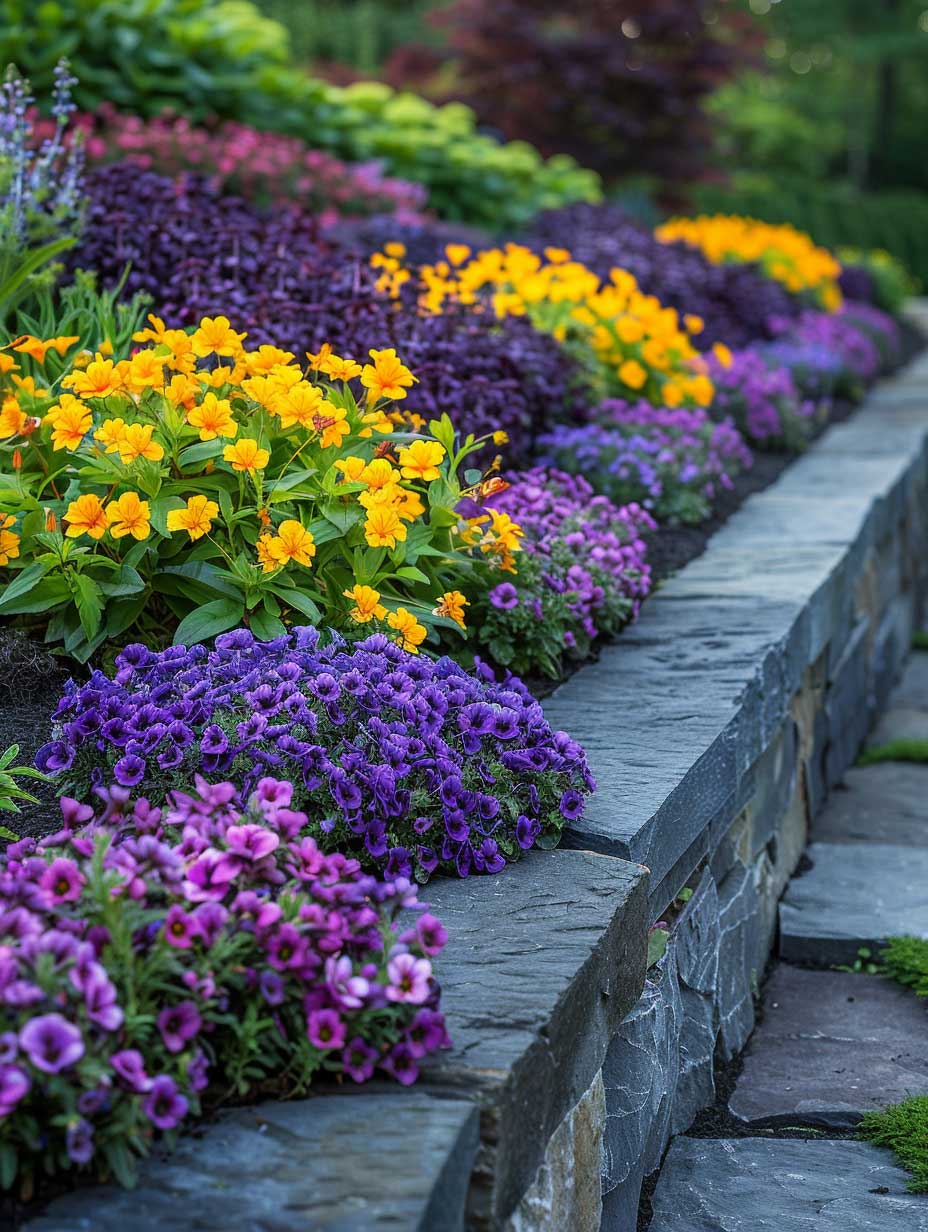
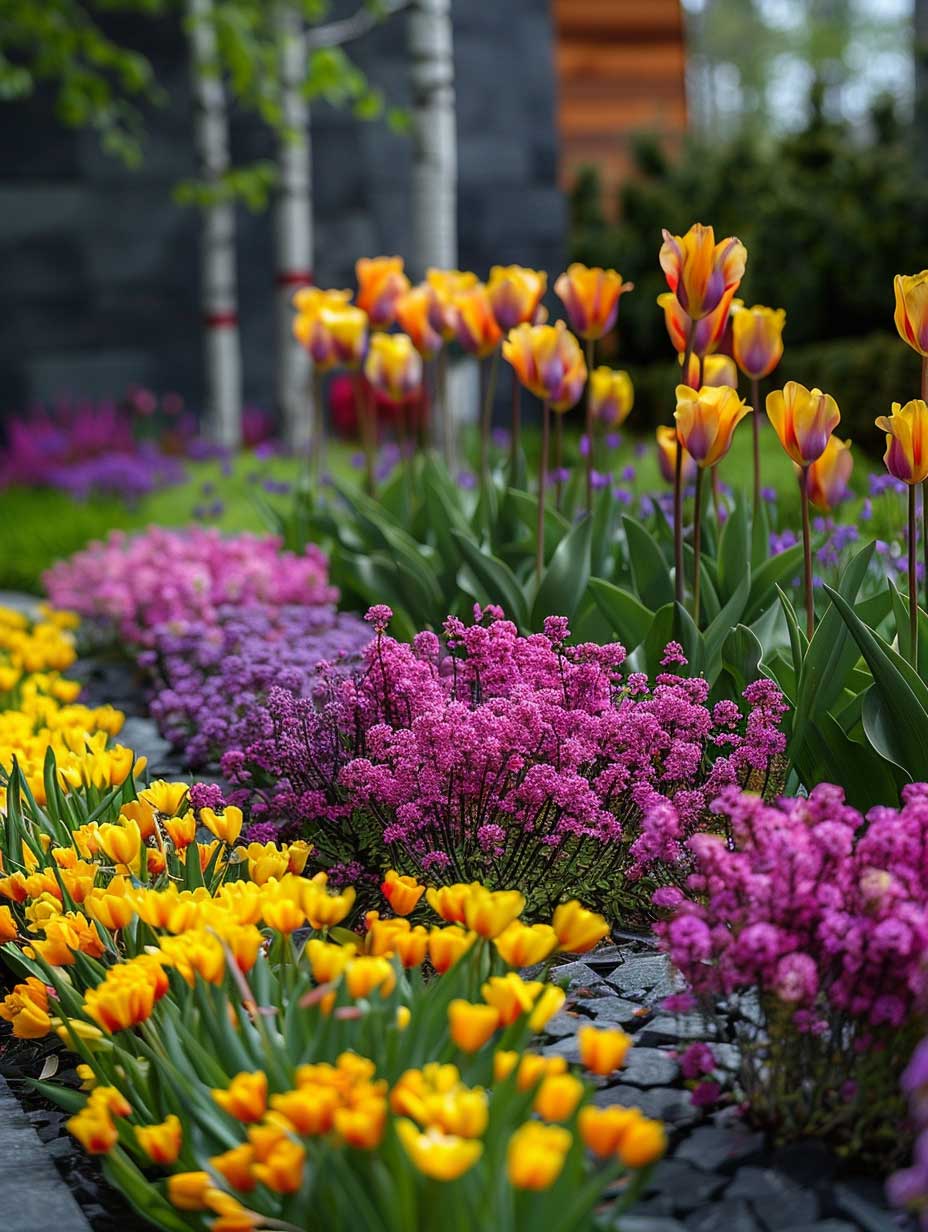
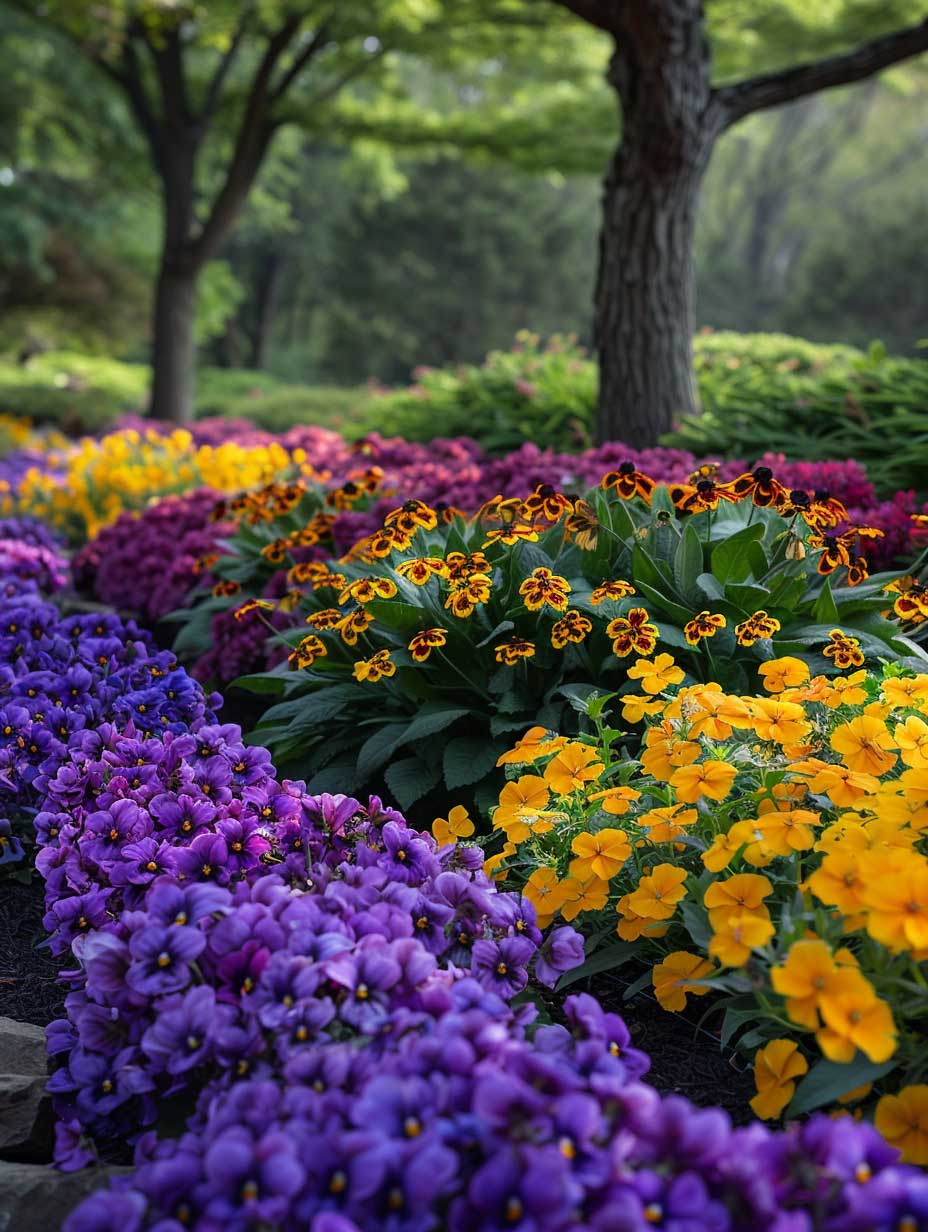

Sustainability and ecological considerations also play a role in the selection of plants and materials used to create these color blocks. Modern landscape design is not just about aesthetics; it is deeply rooted in the principles of environmental stewardship. Designers opt for native plants that are not only vibrant but also beneficial to the local ecosystem, supporting pollinators and promoting biodiversity. In this way, the bold use of color goes beyond decoration, contributing to the health and sustainability of the garden and its surroundings.
The integration of bold color blocks in modern landscape design is a celebration of nature’s diversity. It challenges the monotony of traditional gardens by introducing an element of surprise and delight. Through this approach, landscapes are not just seen but experienced. They become places of joy, reflection, and connection, where the boldness of color serves as a reminder of the beauty that surrounds us and the creativity that lies within us.
In conclusion, the use of bold color blocks in modern landscape design is a dynamic and transformative practice that redefines the boundaries of outdoor spaces. It is an art form that combines aesthetics, sustainability, and functionality, creating gardens that are not only beautiful but also meaningful. As we continue to explore and embrace this vibr
Water Features Blending with Textured Foliage in Modern Landscape Design



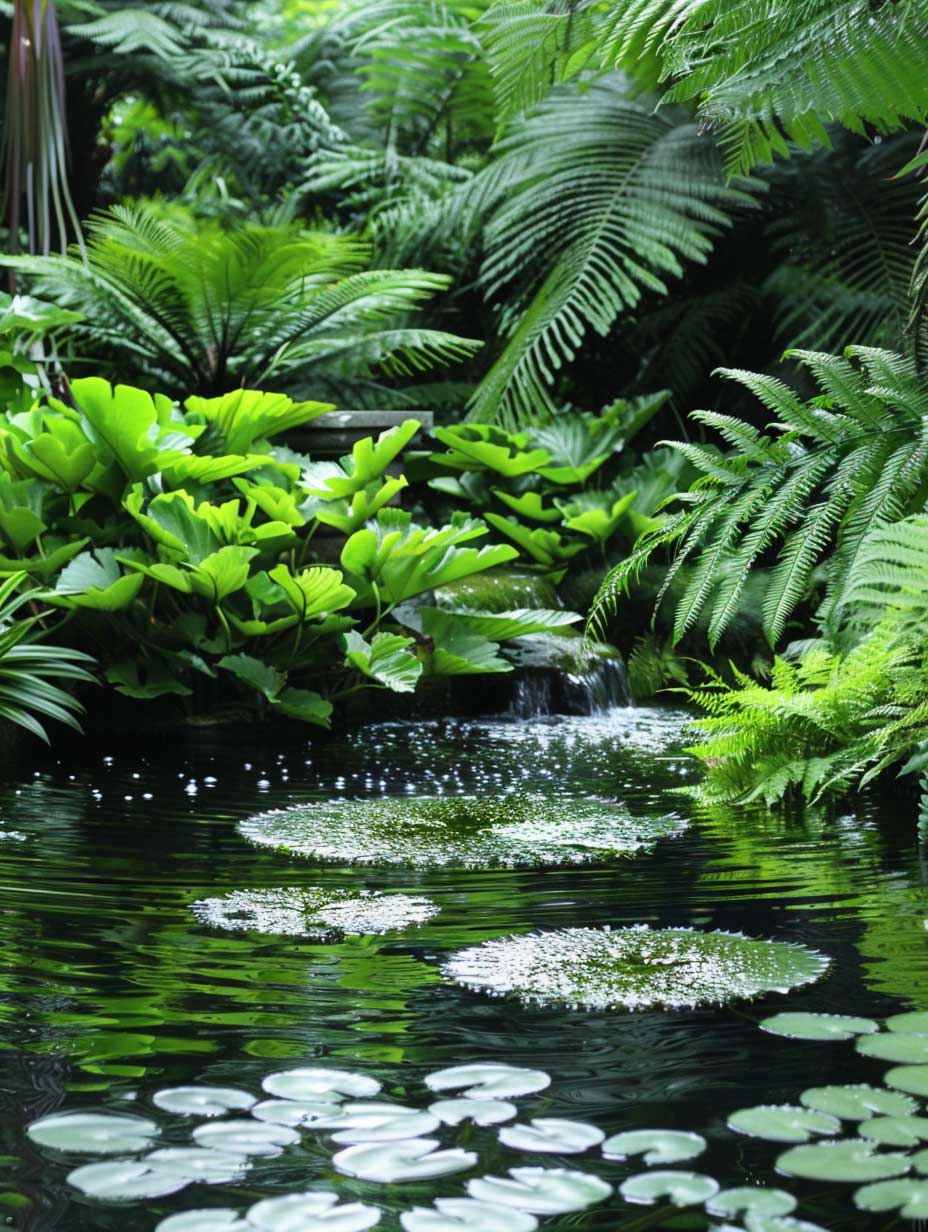
When modern landscape design embraces the integration of water features amidst textured foliage, it creates an oasis of tranquility and beauty. This approach crafts an environment where the soothing sounds of water blend with the visual diversity of plant textures, producing a serene yet vibrant garden space. The concept is simple yet profound: combining the dynamic movement of water with the static diversity of foliage to create a landscape that appeals to all senses.
Water features, whether they are minimalist fountains, cascading waterfalls, or tranquil ponds, serve as the heart of these landscapes. They attract life, reflect the sky and surrounding greenery, and introduce a sense of movement and sound that breathes life into the garden. The water’s surface becomes a mirror, creating a visual expansion of the space and doubling the beauty of the textured foliage that frames it. This interplay of elements draws visitors into a multisensory experience, where the sight and sound of water provide a calming backdrop to the tactile diversity of the plants.
Textured foliage, on the other hand, introduces a rich tapestry of shapes, colors, and sensations that contrast with the smooth fluidity of water. From the fine, delicate fronds of ferns to the broad, glossy leaves of hostas, each plant contributes its unique texture to the garden. These plants are carefully selected and placed to create visual depth and interest, with attention paid to how their textures play off against the water and each other. The result is a landscape that invites exploration and contemplation, offering new discoveries at every turn.
The design of such spaces requires a keen eye for balance and harmony. The water feature must be scaled to fit the garden, ensuring it neither overwhelms the space nor feels lost within it. Similarly, the selection and arrangement of textured foliage must consider the garden’s overall composition, creating a cohesive look that feels intentional and harmonious. The goal is to craft a landscape that feels like a natural extension of the home, providing a seamless transition between indoor and outdoor living spaces.
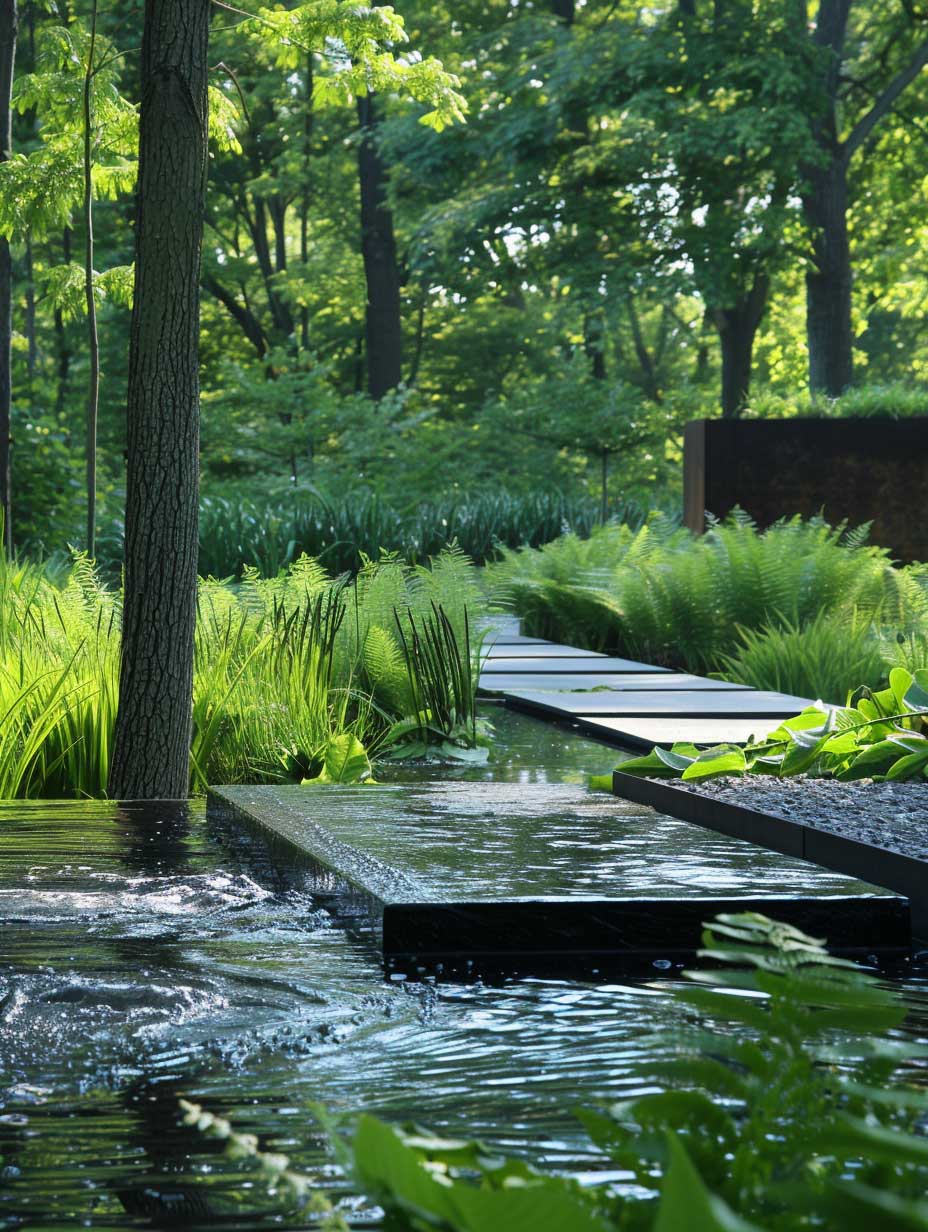

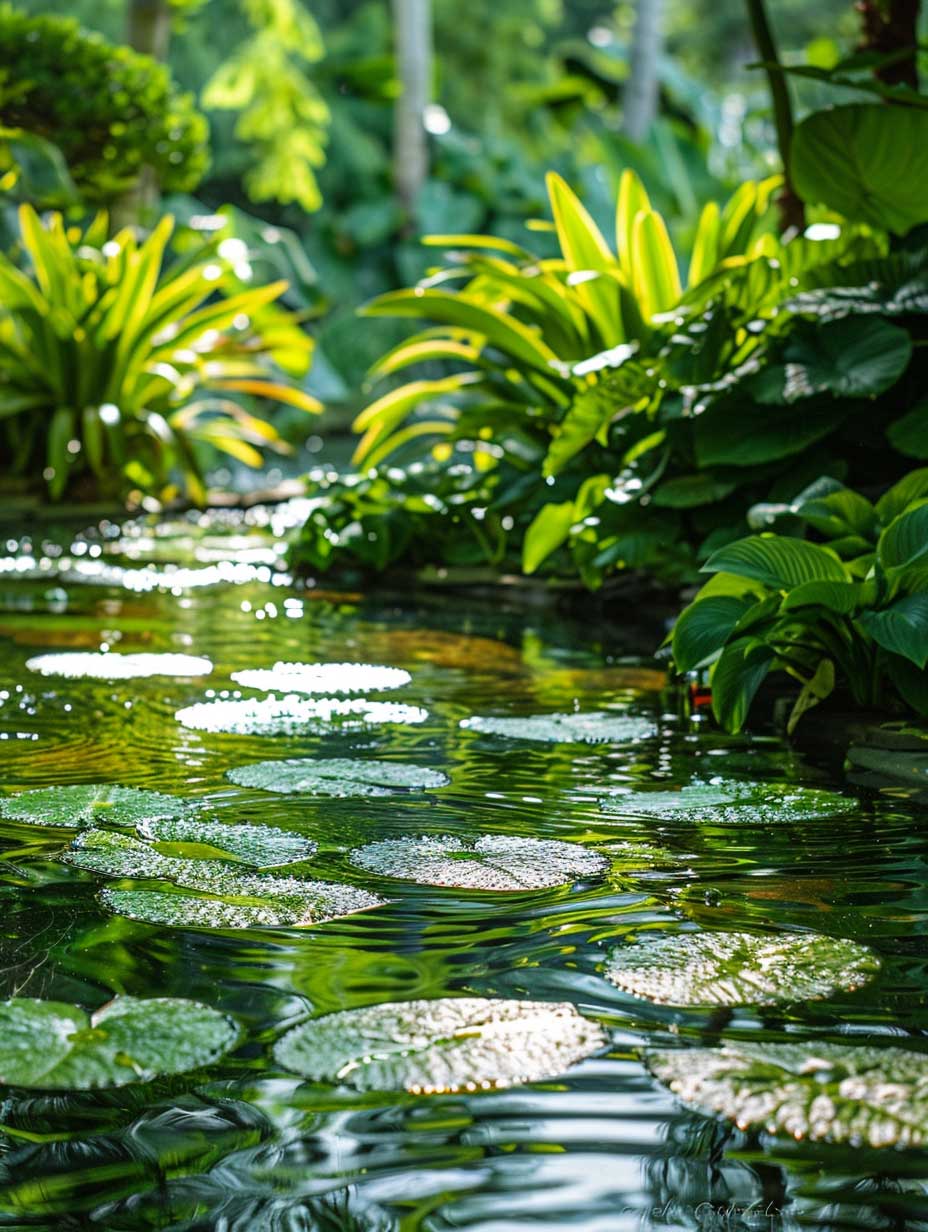
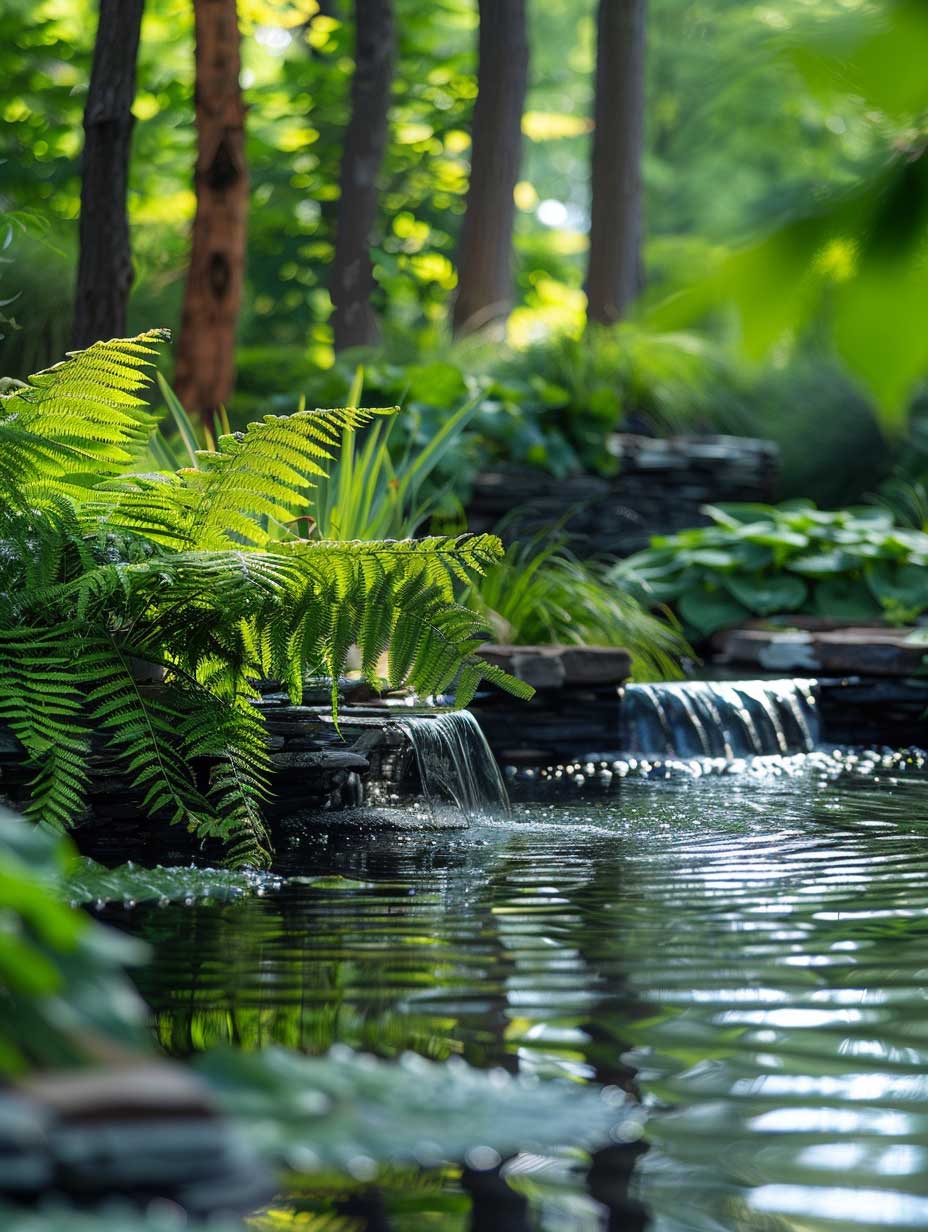
Sustainability plays a crucial role in the creation of these landscapes. Water features are designed to be eco-friendly, utilizing recirculation systems to minimize waste and selecting plants that are native or adapted to the local climate, reducing the need for watering and maintenance. This thoughtful approach ensures that the garden is not only beautiful but also respectful of the environment and local ecosystems.
The inclusion of water features and textured foliage in modern landscape design offers more than just aesthetic appeal; it creates spaces that nurture well-being. The sound of water has been shown to reduce stress and promote relaxation, while the diverse textures of plants stimulate the senses and connect us to the natural world. These landscapes become sanctuaries, offering refuge from the fast pace of modern life and a place to reconnect with nature.
In essence, modern landscape design that combines water features with textured foliage represents a holistic approach to garden planning. It acknowledges the garden as a space for healing, inspiration, and connection, both with nature and with ourselves. Through the thoughtful integration of these elements, designers can create landscapes that are not only visually stunning but also emotionally and environmentally sustainable. These spaces stand as a testament to the power of landscape design to improve our lives and the world around us.
The art of blending contrast, color, and texture in modern landscape design offers endless opportunities to craft spaces that are as diverse as they are beautiful. By experimenting with these elements, designers can create outdoor environments that invite exploration, contemplation, and a deeper connection to nature. These landscapes stand as testaments to creativity and the endless possibilities that arise when we dare to juxtapose the natural world’s myriad forms and hues.

